As we were eating dinner on Sunday night after the show, my wife pointed out that the last post on this site is last year’s SPX wrapup. Whoops.
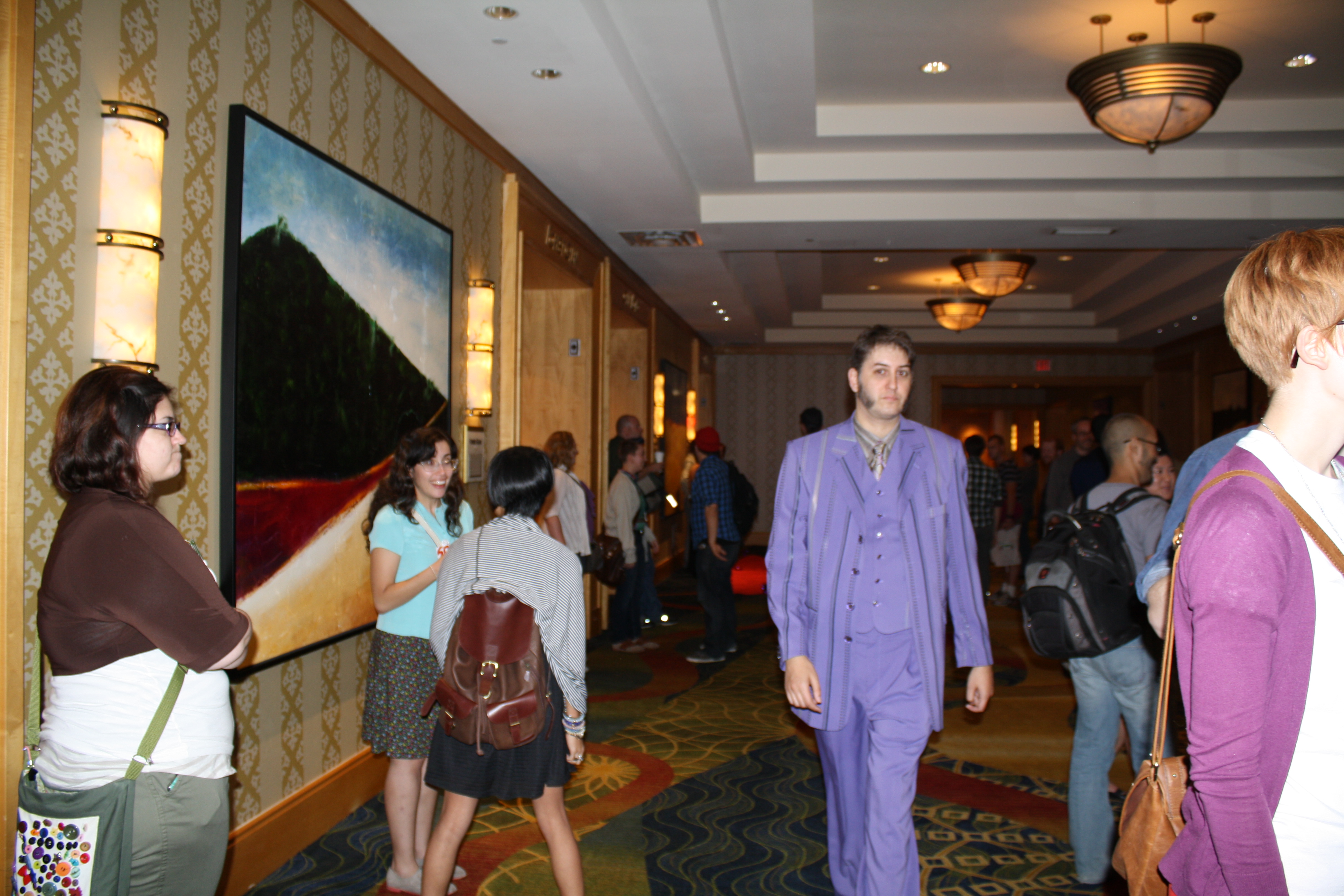
In the week leading up to the show, I did the math and figured out this was my tenth visit to SPX, five years as a vendor (four as press, one as a volunteer). It was also my best show to date. Part of that was the general atmosphere of the show. Almost everyone I talked to had great sales.
This year, SPX brought in an ATM specifically because the hotel ATM is always tapped out by midday on Saturday. The $10,000 in the back-up ATM was gone by 4pm on Saturday afternoon and had to be refilled. They even drew a crude map telling people where the local ATMs are and posted it on Twitter – producing something cleaner is on my to-do list for the coming year. As far as I’m concerned, that blows the whole “same $200 being passed around the room” noise away.
Emo Galactus sold out. It got a favorable review from the Wait, What guys and an unexpected bump on The Beat on Friday morning, which most of my friends said something to me about it throughout the weekend. This was Meredith’s first book and I told her that she shouldn’t expect this kind of success with her next book.
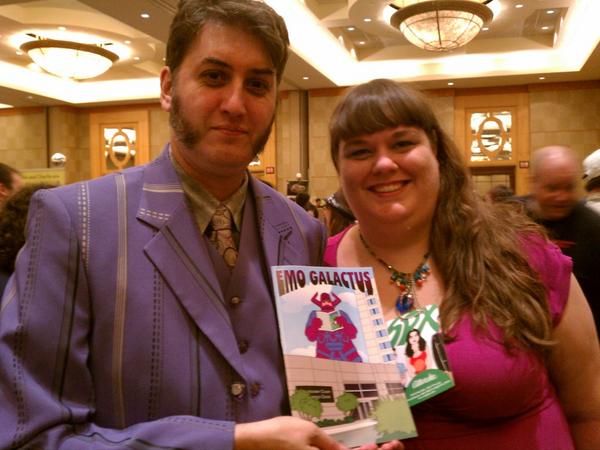
Sales were brisk on Saturday and it was gone by 2:30 Sunday afternoon. My other new books got flipped through, but not bought at the same rate. One was of local interest and the other was a straight up art comic – which has a distinct, other audience. And my metafiction graphic novel series is daunting – but the sample comic has sold out two years running, so people are intrigued but wary about jumping in at the deep end. At $20 a book, I don’t blame them – that’s why I have a $2 sampler.
The tone of the show, however, is not especially deep and introspective unless you bring that reputation (and audience) with you to the show – the whole leather patches on elbows crowd is downstairs, away from the marketplace. As always, good presentation and quick high concept are proven best practices for standing out in the crowd. Flipping through the books we bought, one of the main things that seems to move books is a whimsical concept. We bought a book called Food Porn because the cover was amusing. Is it good? Who cares, it was three dollars. There is another book called Teen Boat – all the angst of being a teen and all the fun of being a boat. It’s been around for years and sells very well.
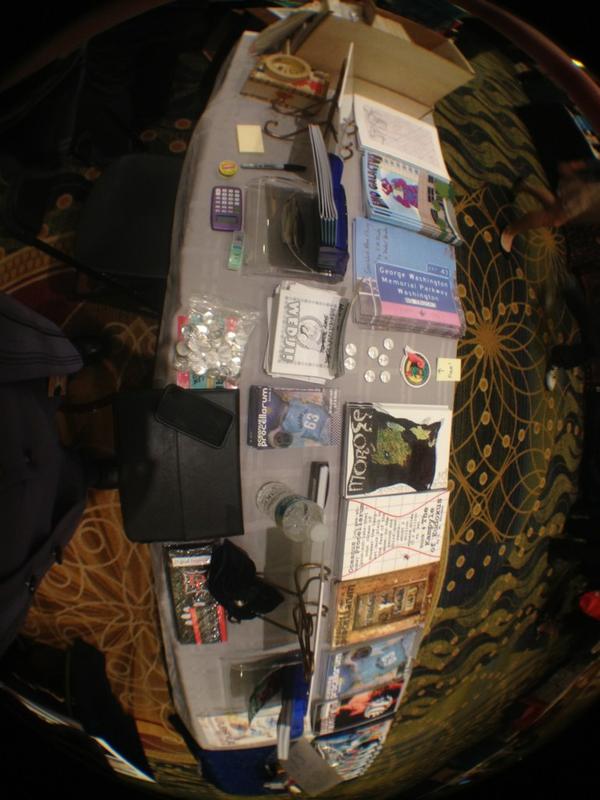
Emo Galactus sold for three dollars. And it is whimsical, with a pop culture reference that people can easily lean on – or at least be willing to take a chance on. The fact that it was born from a dream about Galactus going to SPX probably didn’t hurt. It’s very much a project that is specific to that show – Galactus is even standing behind the convention center on the cover. And if readers like it and want to learn more, there’s an ad for my deep metafictional graphic novel series on the inside back cover, with a link to the whole thing as a webcomic. Always be promoting.
The other main comic that debuted this year was Starseed, the gay porn space opera that Sarah P and I have been serializing on the web. We scheduled the launch of the webcomic in May so we could sell the first book at or about the time that the first book ends initial serialization. The main selling point – beyond the laser-focused tag line of “gay porn space opera – you either perked up or you didn’t” – is that the comic is black and white on the web and color in print. And the color is amazing.
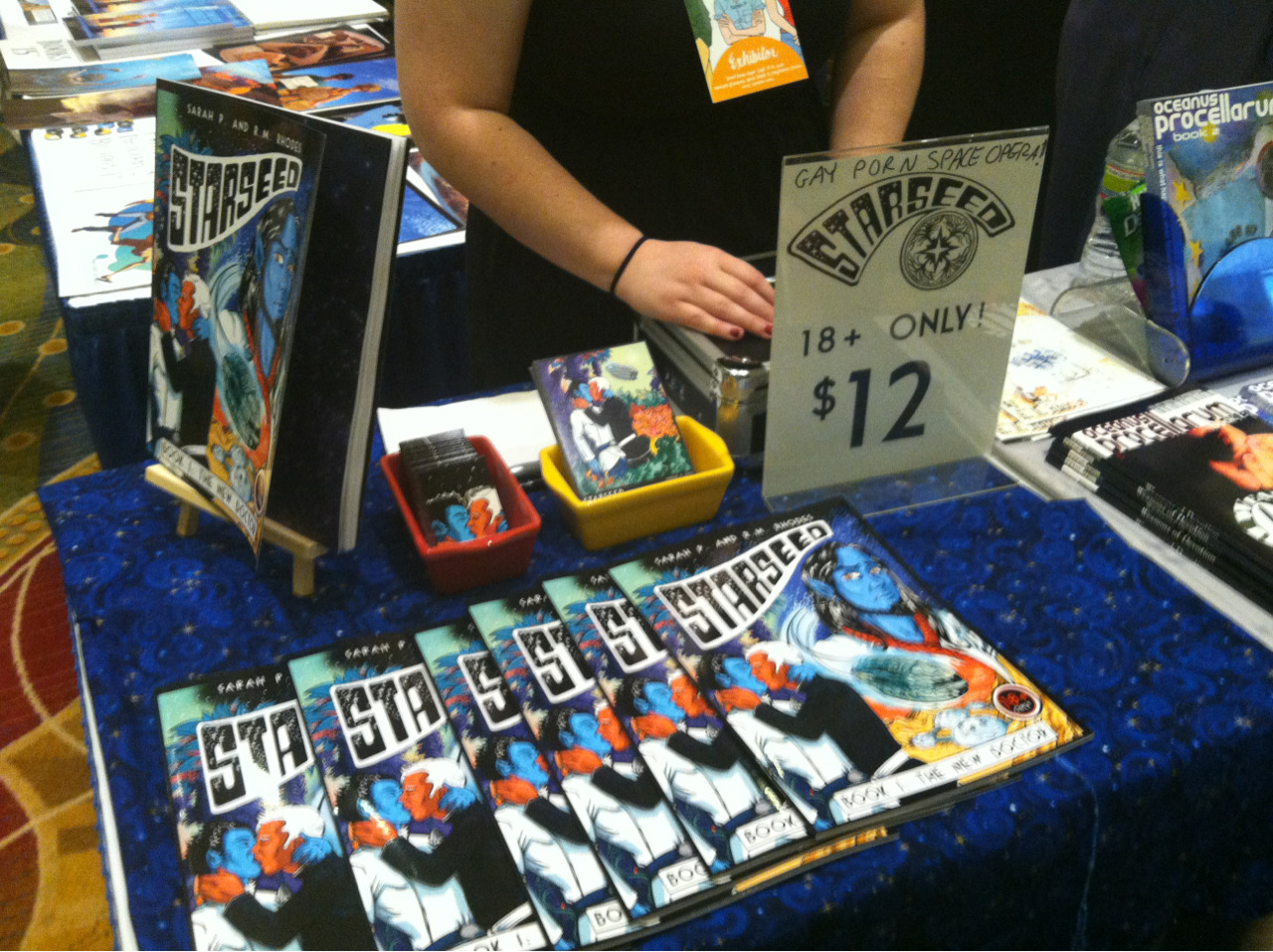
The title is aimed at a very specific pair of demographic groups – the obvious (gay men) and the orthogonal (straight women who enjoy gay porn). The latter is a huge, untapped market that is almost completely opposite to the straight male-heavy demographic of superhero comics. Starseed will never, ever sell well in a mainstream store. But at a show like SPX, where there is a much greater chance of a straight woman who likes gay porn randomly walking by, we did very well. The plurality of openly gay men moving through the crowd also helped a lot.
We have a few other conventions that we’re thinking about – YaoiCon is a gimme, as is Geek Girl Con – but it is extremely unlikely that we would ever seriously consider New York or San Diego. Those are simply not our markets. We just happen to produce an artform that everyone assumes would do well at those events simply because Starseed happens to be comics and they are comic cons.
This was Sarah’s first con and we did everything we could to set her up for success. I sold my books on my table and she sold her book in the adjacent space. We got a banner and made sure that she was dressed to impress – no purple dress, though. She did well for her first con behind the table and we spent most of the show trying to figure out what was working and what wasn’t. There is always room for improvement – the trick is figuring out how to do that most efficiently and effectively.
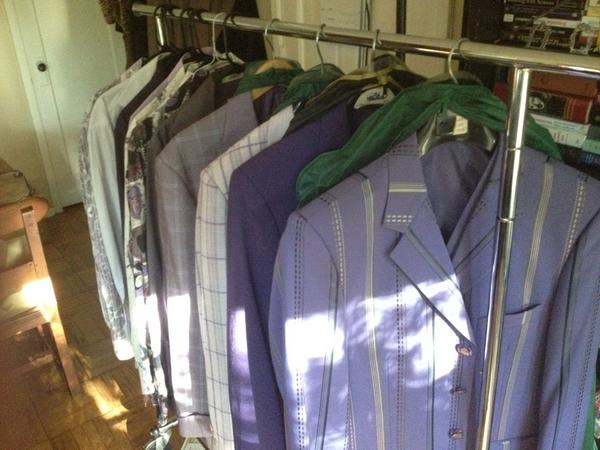
The best part of getting ready for SPX is figuring out which purple suits I should wear and what ties and shirts should go with them. I have options, which makes it fun. The suit I bought in Baltimore has become my regular convention suit and I wore it on Saturday. It’s got browntones in it, which isn’t usually paired with purple, but my wife reminds me every year that I specifically bought a tie to go with it. The Sunday suit was bought on H Street. It comes with two pairs of pants, one plain and the other in plaid to match the jacket and one side of the vest (the other half is plain).
SPX Red Carpet from Griller Video on Vimeo.
My wife and I have been joking for years that we should run a red carpet event before the Ignatz Awards. This year, we got serious about it and called in friends to do interviews and film the whole thing. On Saturday night, after a full day on the floor, we ran a red carpet event before the Ignatz Awards. My wife Shannon Stewart and her friend Stacy Hayash interviewed people while our friend Matt McGarrity did the filming.
My job was to work the crowd, bringing volunteers who wanted to be interviewed. I have to say that getting indie comics creators to go promote their work in public was like pulling teeth. Far too many plead shyness. I gravitated towards people wearing fezes and top hats, on the theory that style wants to be noticed (I know I do when I wear a purple suit).
We got some good, entertaining guests on the red carpet, including (but not limited to): Box Brown, Meredith Burke, John Bintz, Jen Vaughn, Matt Dembecki, Andrew Cohen, Anne Thalheimer, Godzilla and a man wielding a lightsaber and wearing a George Bush mask. At one point Godzilla tackled George Bush. It was a lot of fun. Our primary instruction going into the event was: “If we’re not having fun, we’re doing it wrong.”
One of the weird things that I’ve noticed about SPX over the past few years is how much more dapper the crowd has become. The running joke for a long time was that the standard cartoonist uniform is a flannel shirt, pop culture t-shirt and Converse All-Stars. I flatter myself that showing up in a purple suit for five years running upped the game, but this year I noticed some great hats and an awful lot of suit jackets. The purple suit is about attracting attention and staying memorable. In theory, it should work with an awesome hat.
Even portions customer side of the crowd were dressed well. A State Department delegation rolled through at one point in suits and ties. Godzilla aside, there was no cosplay, which is really weird for anyone who has vended or attended a “real” comic con.

My brother used to live across the street from the convention center, so I’m very familiar with North Bethesda. Technically, Bethesda doesn’t extend north of the Beltway, so the Marriott is located in the no-man’s land between the Beltway and Rockville. Bethesda has a nicer cachet, but the whole area is far more Rockville Pike than Bethesda. Bethesda is pedestrian friendly. Rockville Pike is a road that stretches from the Potomac in Georgetown to the wilderness north of Frederick but is most notorious for the strip malls along this stretch and not pedestrian friendly at all. At least, not yet.
The good news is that Montgomery County is a largely affluent suburb of a relatively affluent major city. One of the most generous things you can say about Washington DC is that it’s a transient city – only 35% of the people who grew up here still live here. Between military personnel being constantly rotated in and out and the two-year election cycles and all of the contract recompetes, there is a lot of turnover in population, so these kinds of shows are always new to someone. DC also has a strong art tradition – there is a periodic free art show called Artomatic that draws thousands of people.
The bad news is that North Bethesda is a suburb – if you go four blocks in any direction you’re surrounded by single family homes as far as they eye can see. Beautiful place to grow up, but about the only tourist-friendly places you’re likely to find out there are F. Scott Fitzgerald’s grave and the Nuclear Regulatory Commission (directly across the street from the hotel). The public transportation infrastructure is really good in Montgomery County, but a large number of people drive everywhere and there’s a lot of stuff you just have to know about. We ate dinner on Friday night at an Iranian kabob place ten minutes up the street that my family has been going to since I was a kid. (Take the metro one stop to Twinbrook and walk three blocks. Try the lamb.)
Having said that, SPX held it’s own against the H Street Festival this past weekend – a major event in the District proper aimed at the crypto-hipster population that frequents the themed bars in the so-called Atlas District. That event got somewhere over 60,000 people and at least a portion of those might have also been inclined to show up for something like SPX.
Speaking of which, I hit the Ignatz afterparty at about midnight on Saturday night and talked to a few people, but I really wasn’t up for trying to hang out in the scrum. To a certain extent, a combination of age and locality gives me a different perspective on the afterhours activity. It’s not a case of “there’s nothing else to do” because there are plenty of things to do. But given my choice of activities, sleep works best for me – I gotta work in the morning. And the day after that.
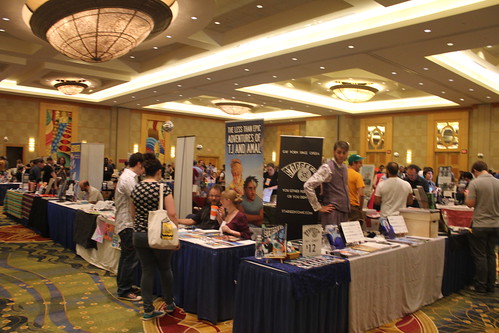
I had some very good conversations. A pair of experimental fiction students were interviewing people about experimental comics so I gave them an earful about how not being able to draw pushed me to seek out different ways to illustrate my comics. I think I even paraphrased a Brian Eno/Alan Moore exchange because I thought it was relevant; I’m not sure that they knew who either of those people were, to be honest.
One of my favorite parts of internet interaction is meeting peers that you’ve been talking to on Twitter for weeks or months. I love it when someone is as cool in person as they seem to be online. It’s been happening to me for over a decade and it never gets old. It would be nice to have more time to talk that didn’t incur a sleep deprivation penalty, but there are always tradeoffs.
One of my primary goals this year was to connect the three diverse pieces of information about myself; I am immediately identifiable as the man in the purple suit and have been for five years, but nobody knows my name and nobody knows what kind of comics I make. This year, Emo Galactus propped up the content end of the triangle and I made sure to mention my name in conversation to prominent journalists – I actually got a few “oh yeah, I recognize the name” responses.
This kind of thing takes time to build. As much as I’ve been learning how to make comics over the past five years, I’ve also been learning how to brand myself, how to sell comics, how to work a table and how to talk about comics like I know what I’m talking about online with other people who share my interests. These are all distinct skillsets and I’ve only been exercising them for five years, if that. Going by the “it takes ten years of constant effort to get good at something” yardstick, I’m about halfway there. Operating under the assumption that I’m going to be making comics for the next 35 or 40 years (at least), a slow build is worth the time invested. No reason to go around being dumb in public when I can be dumb where nobody’s watching.
And, of course, I bought comics.
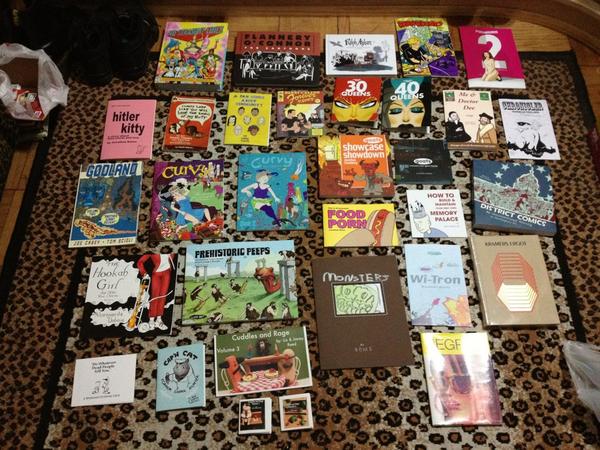
Overall, the show did what it does every year: fill me with an urge to make comics. The wave of creative energy that builds around the show does a lot to charge the batteries and reinforce the determination to get things done, to impress the people next year with something even better. I had five separate conversations that boiled down to “yeah, let’s do something together” with other artists – always a good sign.
One of the things that SPX does in general is fill me with optimism about the future of the comics medium. I keep hearing that this or that is the death knell for comics. The people moaning about the state of things are not attending SPX. The American superhero comic publishing industry may be having trouble, but any medium with this many dedicated people who are doing this for more love than money (although the money was good this year) is quite healthy, thank you very much. More than anything else, this year’s SPX was a reaffirmation of our creative confidence; it is okay for us to be doing the things we are doing. Not that we need permission.
On the way home, I then harshed my buzz by rear-ending an elected official in Columbia Heights. But that’s another story….